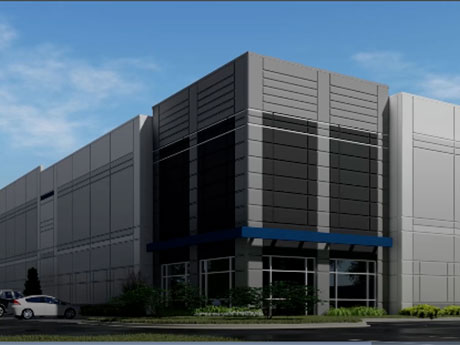By Beau Taggart, Cushman & Wakefield
Historically, Columbus was a steady-performing, secondary industrial market that saw minimal rent increases. Often, it was overshadowed by “big brother” cities such as Indianapolis and Chicago that were perceived as more appealing to institutional investors. After the great recession of 2008, though, Columbus began to mature economically, and the region began its meteoric rise as a leading big-box industrial market in the U.S.
Located at the intersection of Interstates 70 and 71, within a day’s drive of 46 percent of the U.S. population and containing one of the only freight-only airports in the country, Rickenbacker Airport, Columbus began to attract more and more major retailers such as Zulily, Lululemon, Macy’s and Sam’s Club as well as e-commerce giant Amazon, which has opened several bulk facilities throughout the region. Additionally, three major intermodal terminals and major UPS and FedEx hubs strategically located throughout the area boosted Columbus from its secondary status to a primary inland hub on every major distributor’s radar.

Like many markets, 2021 was Columbus’s most prolific year. Interest rates were at an all-time low, and users were compensating for COVID-fueled consumer demand. Asking rates grew by 14 percent and vacancy shot down to 2.6 percent. Flat geography and relatively cheap land allowed developers to build over 22 million square feet of industrial product between 2020 and 2022.
Fast forward to 2023, and the economic climate is quite different. The Federal Reserve is aggressively raising interest rates with no clear end in sight. Banks are hesitant to lend, and consumer spending has been up and down. But Columbus industrial end-user activity remains steadfast.
Columbus’s diversifying industrial base is a leading factor in the region’s strength and resilience. Ten years ago, Columbus would not be considered a manufacturing destination, but as companies look to onshore their supply chain into the U.S. to avoid the windfall of issues caused by COVID-19, Columbus became a premier market for manufacturing as well as alternative, life sciences industrial users, such as pharmaceuticals, biologics, gene therapy, electric vehicle battery and more.
Bolstered by the monumental win of Intel’s $20 billion semi-conductor manufacturing plant in New Albany, onshoring momentum surged and Columbus has been dubbed the “Silicone Heartland.”
Expansions from Amgen and AmplifyBio are two of literally dozens of pharma and life sciences economic development wins for the region over the past few years. Amgen selected New Albany for a $375 million drug manufacturing and packaging facility that will employ 400 people. AmplifyBio chose New Albany as well for a $150 million complex that will employ more than 100 well-paid R&D workers in a 350,000-square-foot project.
Additionally, Denver-based Staq Pharma acquired a former Express Scripts building on Columbus’s west side and is investing $50 million to create a state-of-the-art compounded medications production facility.
Other significant victories include:
• The Honda/LG electric vehicle battery facility in Jeffersonville, a $3.5 billion investment
• Hyperion Cos. hydrogen fuel cell manufacturing plant in Columbus, a $300 million investment
• Pharmavite’s gummy vitamin plant in New Albany, a $200 million investment
While those are the headliners of the past year-plus, they also serve as catalysts for future growth as their suppliers seek to locate near top clients and third-party logistics providers add their expertise and grow operations locally.
Why Columbus?
One of the top and obvious factors is higher education. The Ohio State University is among the top three largest universities in the country and is quintessential in attracting companies to Columbus that look for highly skilled labor. Ohio State and other nearby universities graduate their fair share of STEM majors that employers are looking for, and over 75 percent of Ohio college grads stay in the state after graduation.
Ohio State and the region’s economic development also drive population growth. Columbus is now the 14th largest city in the U.S. and has seen population growth every year for the past 12 years. With labor heavily in mind, major firms view population growth as a key site selection factor. Even with that growth, the region still offers an affordable cost of living for residents/employees.
For industrial end-users, of course, there’s the aforementioned transportation infrastructure, but the region also offers massive — and, again, relatively low cost — reserves of power, through AEP, as well as water.
Lastly, local and state level economic development departments such as One Columbus and Jobs Ohio offer a plethora of incentives programs that hold their own against any state in the country, and our unique property tax abatement platform allows for up to 15-year, 100 percent real estate tax abatements on new building improvements of which 100 percent of the savings are passed on to the user. Depending on the size of the project, this can amount to eight-figure savings over a 10-year period.
While the macro economy faces uncertainty and a few headwinds, Columbus’s industrial market is well positioned. There is currently 15.7 million square feet of industrial product under construction, but material delays heavily stagger building-delivery dates.
Vacancy hovers in the 3.5 percent range, near historic lows, and rents escalated a staggering 25 percent between 2022 and 2023. Some users who over-compensated on space during the pandemic are beginning to give space back. However, high construction and capital costs are hindering new development starts.
Manufacturers and life sciences users will take more property positions in 2023, and we will continue to see vacant new-construction product being acquired by users, which allows the developer to circumvent the uncertain capital markets environment.
Additionally, e-commerce/retailers with more mature supply chains who did not see a burst of growth between 2020 and 2022 will take new positions in Columbus along with tier 1 manufacturing suppliers and their third-party logistics counterparts. Demand will keep up with supply.
Beau Taggart is a senior director with Cushman & Wakefield. This article originally appeared in the April 2023 issue of Heartland Real Estate Business magazine.


